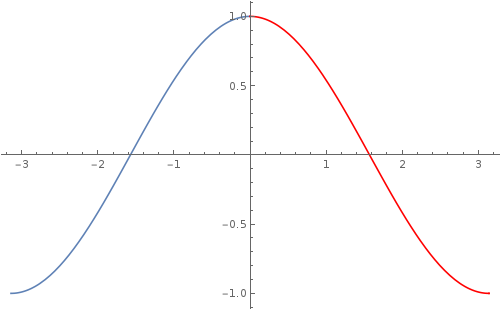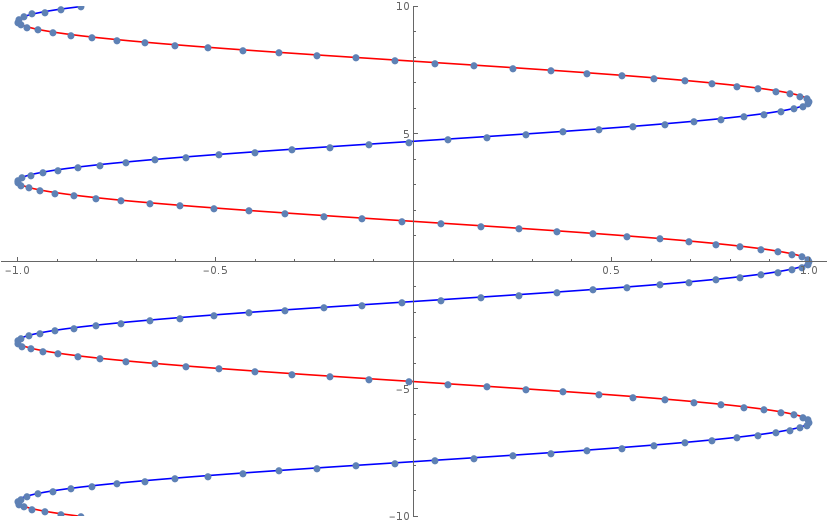Good responses all around, and I agree. It's useful to think about the conditions where you expect an inverse function to exist, and how are the inverse functions defined or calculated from first principles?
You should conclude that the notion of an inverse function is essentially a local concept, limited to domains where the direct function is either strictly increasing or strictly decreasing.
Then, if necessary, you can program functionality to "patch" your direct and inverse functions. For example:
Show[
Plot[Cos[x], {x, -Pi, 0}],
Plot[Cos[x], {x, 0, Pi}, PlotStyle -> Red], PlotRange -> All,
ImageSize -> 500
]

Extrapolate this patching scheme to the entire domain, taking advantage of translation ivariance. Then permute
$x$ and
$y$ axis, and you will calculate the following patched inverse function
Show[
Plot[
-ArcCos[x] + 2 Pi # & /@ Range[-5, 5], {x, -1, 1},
PlotRange -> {-10, 10}, PlotStyle -> Blue],
Plot[
ArcCos[x] + 2 Pi # & /@ Range[-5, 5], {x, -1, 1},
PlotRange -> {-10, 10}, PlotStyle -> Red],
ListPlot[{Cos[#], #} & /@ (Range[-150, 100]/10),
PlotMarkers -> {Automatic, 10}]]

Thanks, Brad.